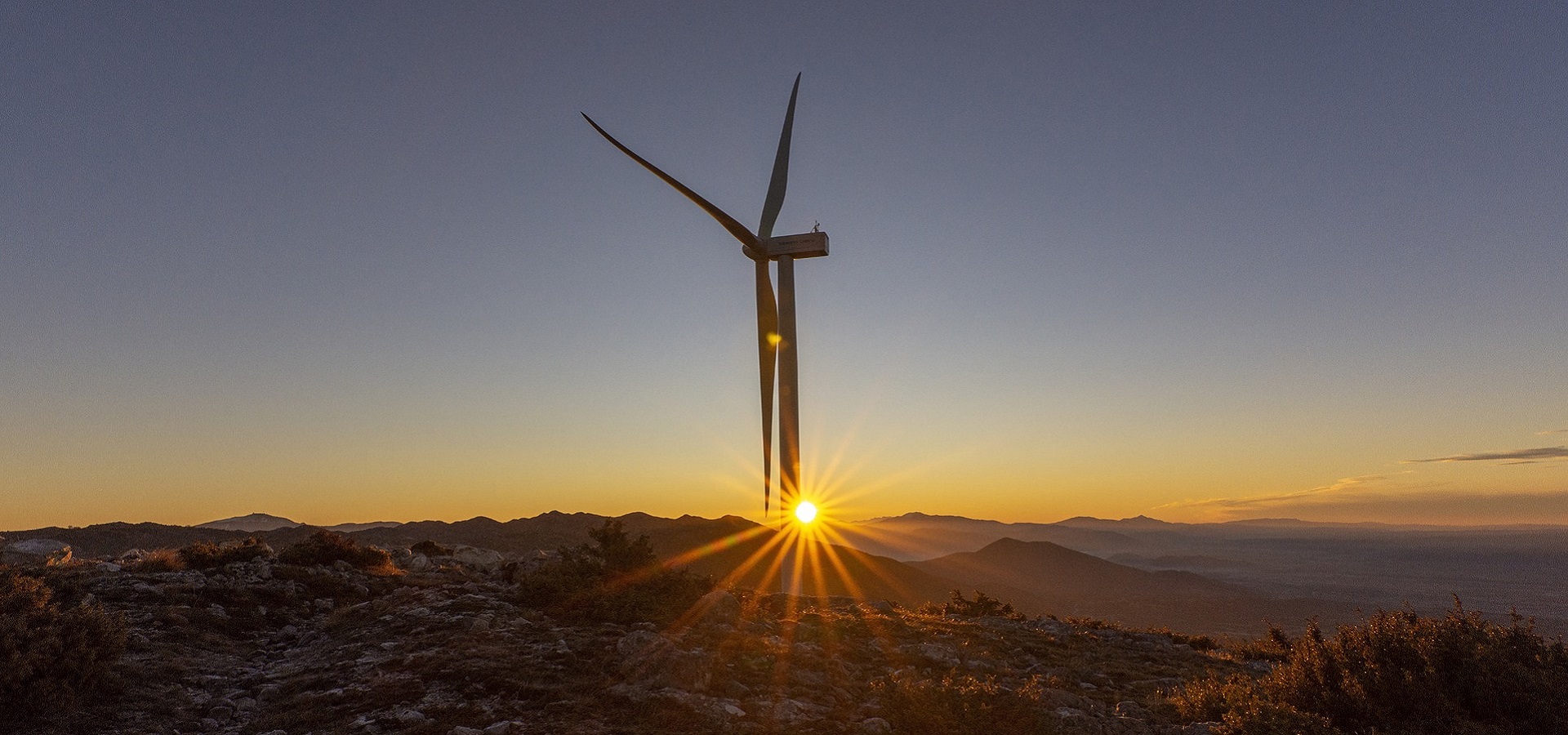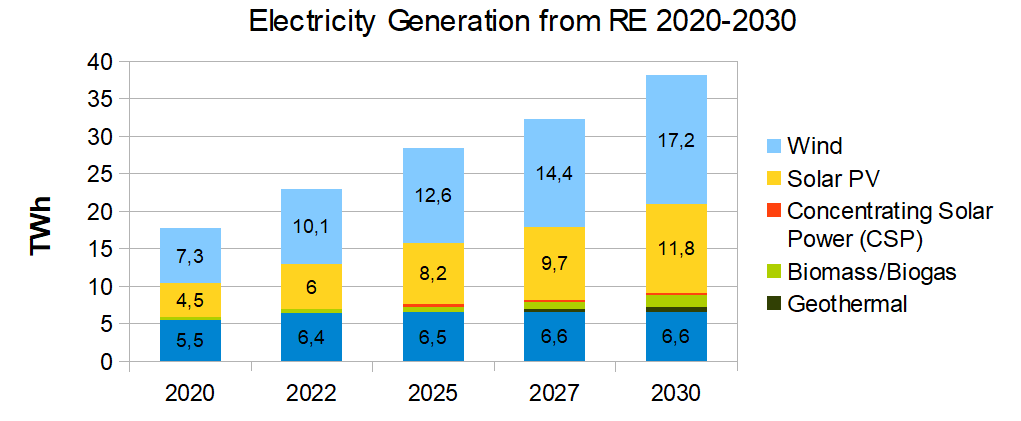After years of stagnation, the new government wants to speed up the energy transition in Greece. Can the vast potential of wind and solar energy finally be exploited following the slow-down of recent years? Daniel Argyropoulos fills us in on the details.

The last decade only few new renewable energy power plants were built in Greece. (Public Domain)
Greece has experienced a deep recession during the longest part of the last decade as a result of the financial crisis and subsequent politics of austerity. The aftermath of the recession can still be felt today, with unemployment remaining among the highest in the EU – particularly among young people who struggle to find a job.
This crisis also had a strong impact on the development of renewable energies, the market for solar and wind projects in the whole country slowed down considerably. After the solar boom of the years 2011-13 when more than 2,000 MW of photovoltaic (PV) capacity were installed, just 17 MW of new PV capacity were built per year between 2014–2018. As a result, Greece will not meet its 2020 target of 40% renewables in the electricity mix, currently the share is close to 30%.
Finally, market conditions are improving. Last year, a record of about 750 MW of wind generation capacity was installed, putting Greece in 5th position among all EU countries and showing the increasing interest of developers and investors in renewable energy projects.
What is the way forward?
Greece, as all EU member states, had to submit its final Energy and Climate Plan (NECP) laying out climate & energy targets for 2030 to the European Commission by the end of 2019. The draft plan which was developed under the previous socialist government led by the radical left coalition SYRIZA saw significant changes after the new government led by the conservative Nea Dimokratia took office in mid-2019. The final NECP puts a strong emphasis on reducing greenhouse gas emissions, on scaling up renewables, increasing energy efficiency and phasing out coal-fired power generation. All of the main targets were revised upwards in the final NECP, in some cases quite substantially:
| Main targets | Final NECP | Draft NECP |
| Greenhouse gas (GHG) emission reduction (compared to 1990) | 42 % | 33 % |
| Share of renewable energy (gross final energy consumption) | 35 % | 31 % |
| Share of electricity from renewable energy (gross final power consumption) | 61-64 % | 56 % |
| Final energy consumption (mtoe) | 16.1-16.5 | 18.1 |
Source: NECP
Interestingly, the new Greek government decided to speed up the exit from coal-fired power generation: all power plants shall be shut down by 2028. The use of domestic lignite has been a central element of the Greek energy system for many years, in 2018 its share in the electricity mix was about 34%. Phasing out the use of lignite in just a few years is without doubt a big task. If its current share were to be replaced with another fossil fuel, namely natural gas, the climate target would be in danger. In order to meet the GHG reduction target, two things will be of primordial importance: the share of renewables needs to grow fast and energy efficiency needs to increase allowing to reduce the overall need for energy.
Can renewables fill the gap?
To meet the 2030 target, renewables need to more than double, from currently about 29% to 61% of the gross electricity consumption. The largest contribution is expected to come from wind energy and solar PV, given the maturity and cost competitiveness of these technologies. The NECP foresees that both wind and solar PV become the main pillars of the Greek electricity system:
- Total installed wind power capacity is expected to grow from 3.6 GW in 2020 to 7 GW in 2030, corresponding to a yearly average increase of around 310 MW. In comparison, the yearly growth between 2011 and 2020 was about 220 MW.
- Installation of solar PV capacity is expected to grow from 3 GW to 7.7 GW between 2020 and 2030. This translates to a yearly average increase of about 430 MW – the annual growth between 2012 and 2020 amounted to 190 MW on average.

Source: NECP
In addition to ramping up wind and solar PV, the NECP foresees that innovative technologies like offshore wind and wave energy should also play a role in the electricity mix up to 2030. Also, the use of hydrogen and other storage technologies shall be explored to provide the necessary flexibility in a future energy system that is characterised by a much higher share of variable generation.
Although the tide seems to be finally turning, there is still a long way to go. Several challenges need to be overcome if the ambition set by the NECP is to be met, e.g. grid expansion, the particular situation of many islands that are not interconnected or regulatory and administrative challenges.
First steps to address the challenges have already been made:
- The establishment of a Regional Security Coordinator (RSC) for Southeast Europe (SEE) by the Greek, Bulgarian, Romanian and Italian transmission system operators (TSOs) in Thessaloniki is expected to boost regional cooperation and improve the integration of national power markets (the RSC was initially expected to be operational by summer 2020).
- Non-interconnected islands in the Aegean and Ionian Sea are being connected to the grid step by step, making expensive and dirty electricity generation from oil and diesel superfluous and opening the door to the supply of these islands with renewable energy.
Of course, support from all sides is needed to put this Herculean task in practice. Let’s hope the gods be in favour of the energy transition – particularly Helios and the Anemoi, the gods of the sun and the winds.
The Aegean Sea is quite deep (http://ontheworldmap.com/oceans-and-seas/aegean-sea/aegean-sea-physical-map-max.jpg), ruling out fixed-foundation offshore wind in most places. Floating wind has arrived just in time for the Greek push into large-scale renewables. This could be important as the land is pretty mountainous and good flat terrain suitable for wind farms is competed for by agriculture and urbanization. Solar and pumped storage should have less of a problem finding sites. Pumped storage works with seawater.